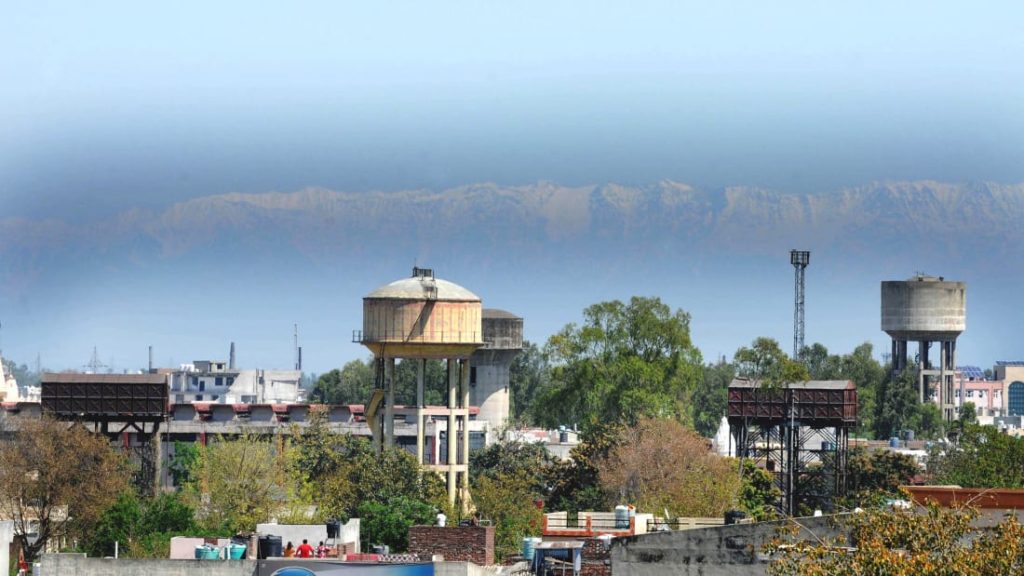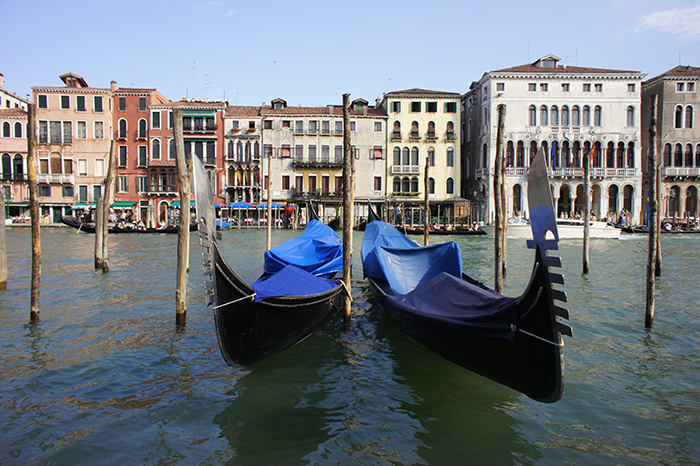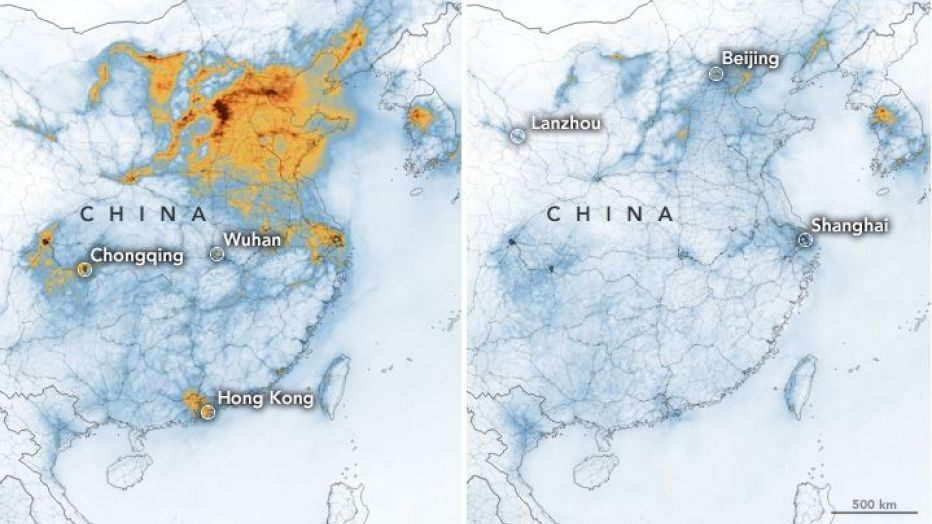COVID-19 Teaches a Pro-Nature Lesson to Humanity
Written by Cami Ismanova.
The novel coronavirus, which causes COVID-19, has created an ongoing pandemic that has been affecting almost all of us in a variety of ways.
It has been reported in 187 countries and territories around the world, leaving hundreds of thousands people unemployed and stuck in quarantines for an uncertain period of time. While some countries are handling it well, others have not been so lucky. At the beginning of April 2020, approximately 3.9 billion people worldwide were under some kind of lockdown amid concerns of COVID-19’s spread. One does not have to be an economist to imagine what kind of economic recessions countries will
face based on the recent figures.
Although economies are partially shut down, consequently limiting industrial manufacturing, production, and touristic transportation, some environmentally positive news has been circulating on the internet and in the media. Among them are a drop in carbon dioxide emissions due to limited transportation use, the clearing of canal waters in Venice, the Himalayan peaks in India becoming visible, the healing of the ozone layer,
and more. It seems like nature is recovering and even thriving, whereas humanity is forced to remain indoors.
It is hard to see a silver lining in situations like the current pandemic, but the fact that nature is regenerating itself is indeed a silver lining.

COVID-19 in India. (wikipedia.org)
The turquoise waters of Venice, replenished with colorful marine life in a currently tourist-free city, and the majestic Himalayan peaks are sights worth seeing, without a doubt! But for how long will they remain in this
condition? The day will come when the world will resume its usual busy life and the never-ending race to increase GDP by producing more and more. In the era of slogans like “the consumer is always right” and liberal economic
concepts such as “the more a country produces, the richer it is,” there is a high probability that we will quickly go back to the way we were. And the way we were was not a sustainable normal. If it were, we would not face
ozone-layer depletion, widespread pollution, freshwater withdrawals, land conversion, increasing magnitudes of natural disasters, and rapidly disappearing species in flora and fauna. Moreover, human activities like deforestation, the booming meat business, and animal hunting increase
the risk that viruses originating in the animal population might jump from animals to humans as a result of closer contacts in the future.

Therefore, I would like to share with you a couple of notable policies implemented by different countries in order to prevent the looming climate crisis. One of them is in the process of partial implementation, while the
other is in the stage of active realization. The first agenda is called “Sustainable Amsterdam,” supervised by the administration of Amsterdam. “Sustainable Amsterdam” is a good example of relevant responses to climate issues that have been stressed by scientists over and over. Briefly,
it is a grandiose plan to make Amsterdam electric, and by that I mean to shift all types of vehicles from diesel-based to electric engines by offering companies low-interest rate loans. Recently, the administration of Amsterdam has announced that it is preparing to transition from a
classical liberal economy to a “doughnut economy,” which is a more eco-centered type of economy.

(Alphons Nieuwenhuis)
The second major initiative is an ongoing “10 Billion Trees Initiative” by the Pakistani government. This green agenda was initially started to deal with frequent floods, prevent deforestation in the long term, and contribute to
balancing out the climate of the world. Since the outbreak of COVID-19, Pakistan has been under lockdown. To help out its unemployed laborers in this time of crisis, Pakistan partially reactivated the “10 Billion Trees
Initiative” and hired thousands of workers to carry on with the agenda while wearing masks and following rules of social distancing. It is evident that the government is planting the trees mostly in rural, low-income areas so these people will benefit from the project the most. It is impressive how the government of Pakistan is managing to keep its people safe and employed, while contributing to the recovery of our planet.

(Junaid Ali)
The last, but not least, green initiative is the International Climate and Environment Center (ICEC) funded by our very own Gwangju Metropolitan City government. The organization plans to change Gwangju into a “lowcarbon green city” via regular policy research and the “green education” of its citizens. The center consists of a triumvirate of Management and Cooperation, Policy and Research, and Education Project teams. All three teams work hard to collect data, identify environmental issues, and respond accordingly. The ICEC leads field activities such as the adaptation of cities to climate change; research on energy, air, and climate quality; and cooperating with citizens to create a balanced, environmentally friendly green city.
Building an economically developed city without compromising its environment is a key goal of the center. At the latest ICEC “Plastic Waste Management” workshop, a set of new innovative solutions was presented to the public in 2019.
South Korea will rely on its advanced technological potential to address expected increases in plastic waste production. According to the statistics
provided by Kim Young-yul, the representative director of BASF Company Ltd. (a participant in the workshop), by 2050 there could be more plastic than fish in the ocean. As one of the possible solutions, he mentions the
“circular economy.” In contrast to a “linear economy,” which mainly focuses on “take-make-waste,” a “circular economy” offers to use and then reuse, and maybe reuse again if possible.
As Harvard scientist Avi Loeb concluded in his interview with the BBC, “The human species will likely destroy itself long before the sun kills everyone on earth.” The ongoing pandemic is like a splash of icy water on the
face of humankind. But if we could continue to see a significant drop in the percentage of greenhouse gas emissions in countries that most significantly pollute, like China, India, the USA, and others, improvements in air and water quality like the world has seen over just the last few months are some of the benefits humanity can expect to reap. There is hope, but there are no excuses left. It is no longer “us” versus “them.” COVID-19 evidently does
not have any borders, and neither does climate change.

(NASA Satellite)
A South American proverb says, “We did not inherit the earth from our ancestors, we borrowed it from our children.” And unless you are Elon Musk planning to take off to Mars or somewhere farther in the near future, you should always keep in mind that you are part of a global society that is responsible for taking a stand and leading humanity towards a greener future.
THE AUTHOR
Cami Ismanova is a student at Chonnam National University majoring in economics. She enjoys listening to jazz, reading popular science, writing, and traveling around (when it is safe…). Cami wishes everyone to stay
healthy. Instagram: @camidisman.



